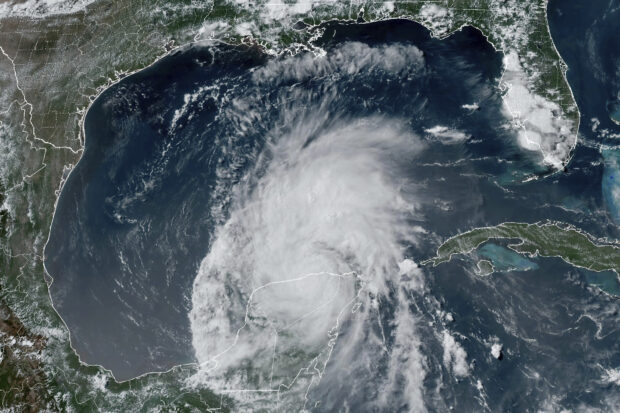Reinsurance buyers generally saw positive outcomes during the mid-year renewals, finding adequate capacity to meet cedents’ increasing demand for protection — in both property and casualty, according to three renewal reports from reinsurance brokers.
“Loss-free property programs generally saw easing of pricing, even as demand increased,” said Guy Carpenter in its renewal report, titled “2024 Mid Year Renewal Insights.” “While casualty programs were also completed with adequate capacity, pricing and underwriting scrutiny persisted…”
“Overall, insurers achieved positive renewal outcomes at mid-year renewals, with property catastrophe risk-adjusted rate reductions and improvements in terms and/or coverage,” said Aon in its report titled “Reinsurance Market Dynamics – July 2024.
“Underwriting discipline remains strong so any shortfalls in reinsurance placements are no longer linked to capital concerns but to individual underwriting considerations on each specific treaty,” said Gallagher Re in its 1st View report titled “Balance Maintained.”
Gallagher Re noted that reinsurance buyers saw a more welcoming market during the July renewals in comparison to recent years, which is unsurprising, given the near record returns for reinsurers in 2023, which exceeded a return on equity of 20 percent for many companies.
“Equally strong Q1 2024 results showed improvements in combined ratios of up to 12 percent. This has resulted from benign natural catastrophe activity, structural and pricing adjustments in the reinsurance market, improved underlying conditions in most primary markets (despite prior-year adverse development in U.S. long-tail lines) and greatly improved reinvestment rates,” added Gallagher.
Reinsurers increasingly are rewarding cedents with more capacity as well as better prices and terms and conditions if they have “a compelling explanation of improvements in original underwriting and pricing.” Gallagher Re described this as “the bedrock of all successful placements.”
“In contrast to 2023, mid-year capacity for U.S. catastrophe-exposed business was more than ample to meet increased demand, with upwards of $10 billion of additional catastrophe limit purchased by U.S. insurers at mid-year along with insurers that elected to secure additional capacity following January 1 renewals,” the Aon report continued.
The June and July renewals continued to build on the positive momentum seen in January and April, with increased appetite from traditional reinsurance and ILS markets resulting in downward pressure on pricing for both U.S. nationals and Florida specialist insurers, Aon said, noting that Florida insurers saw rate reductions for the first time in three years.
“Capacity was more than adequate to support the circa $2 billion of additional reinsurance purchasing, reflecting continued exposure growth, the end of temporary state-reinsurance support and additional purchasing by Florida’s insurer of last resort, Citizens Property Insurance Corporation,” Aon explained.
“This more comfortable market for buyers has been underpinned by an increasing supply of capital to meet increased demand as reinsurers’ balance sheets have expanded on the back of strong 2023 and Q1 2024 results,” commented Gallagher Re CEO Tom Wakefield, in a statement.
More Competitive Market in 2025?
Aon said the stage has been set for a more competitive reinsurance market in 2025, following the mid-year renewals that further consolidated the positive trends seen during the January and April renewals.
“While a more competitive reinsurance marketplace was observed, the landscape remains somewhat dynamic due to volatility in secondary peril losses in property, heightened Atlantic hurricane season forecasts, social inflation and adverse reserve development in casualty,” Aon said in a media note accompanying its report.
Gallagher Re noted that the outlook for 2025 will be heavily influenced by natural catastrophe losses in the second half of 2024 and reserving developments in the U.S. casualty market.
If reinsurers do not produce acceptable results this year, or see a reduction in available capital, “2025 buyers may face a demanding market with an uncertain outlook,” Gallagher warned.
However, if 2024 produces financial results similar to the excellent 2023 result, there inevitably will be pressure from buyers for improved terms and conditions at January 2025, Gallagher continued.
Active Hurricane Season
Of course, the predictions of an “extremely active” 2024 hurricane season is likely to focus the minds of reinsurers and ceding companies. Hurricane Beryl last week became the earliest ever category 5 hurricane to form in the Atlantic making landfall today in Texas.
“Natural catastrophes in 2024 have yet to test reinsurers’ results following the significant increases in insurer net retentions last year,” Aon said in its report. “Catastrophe losses in the first half of this year are on track to be lower than in recent years; however, insurers are retaining a higher proportion of this loss following catastrophe retention increases. This means insurers are retaining more volatility and creates an opportunity for reinsurers to deploy excess capital.”
The predictions of an active 2024 hurricane season “did not unduly influence core traditional reinsurers’ pricing and capacity” although some ILS capacity, ILW capacity and retrocessional capacity providers “did moderate their appetite for U.S. and Caribbean catastrophe exposure,” Gallagher Re explained.
Property Renewals
Guy Carpenter said the majority of property placements during the mid-year renewals were completed either early or on time. “Risk programs were under scrutiny as reinsurers continued to have concerns about the frequency and severity of large risk losses,” the Carpenter report added.
“Global property catastrophe reinsurance risk-adjusted rates at mid-year were generally flat to down mid- to high-single digits. In some cases, upper layers were risk-adjusted down 10 percent or more for non-loss impacted accounts,” it continued, noting that pressure remained on attachments and volatility solutions continued to be sought.
Casualty Renewals
For casualty renewals, buyers generally found adequate capacity, but reinsurers remained cautious about adverse loss development.
Supply and demand dynamics remained stable with adequate capacity, but there have been “minor changes in reinsurer panels, indicating a lack of consensus on the underlying issues and how to address them,” Gallagher Re said in a press release accompanying its report.
Casualty reinsurance underwriters “are not as confident as their counterparts in the property insurance sector,” Gallagher Re added. “Concerns over rate adequacy in the U.S. have increased, following adverse development report by liability insurers in the fourth quarter of 2023 and first quarter [of] 2024”
“The lengthening and deteriorating tail of liability claims have exacerbated reinsurers’ concerns, as the market is already dealing with economic and non-economic loss inflation. Successful placements have been achieved by cedents who can effectively communicate their underwriting and pricing strategies to reinsurers, along with supporting analysis to navigate the challenges,” Gallagher Re added.
Aon said the mid-year U.S. and international casualty renewals were broadly stable and in line with those during the January 2024 renewals. “Casualty rates were generally flat to single-digit increases on a risk-adjusted basis, although casualty accounts with prior-year loss development, D&O and U.S. exposed international casualty business, all came under increasing pressure.”
Aon went on to say the market’s view of the frequency of severity losses and U.S. social inflation is now a central focus of renewal discussions. “That said, capacity remains sufficient, and underlying casualty rates and underwriting actions are heading in a positive direction.”
Carpenter said that casualty renewal outcomes varied by sublines as well as reinsurance type during the mid-year renewals. “General liability and excess/umbrella placements that are U.S.-exposed experienced continued reinsurance pricing pressure for excess-of-loss programs, while quota share outcomes were tied to the amount of adverse development,” said a commentary accompanying the Carpenter report.
“Reinsurers maintained their focus on the vulnerability of a given portfolio to economic and social inflation. Demonstrating reduced volatility through controlled and limited capacity deployment was a key differentiator and impacted ultimate terms and conditions,” according to the Carpenter report.
Cyber Re/Insurance
Guy Carpenter reported that the supply of cyber reinsurance capacity remained strong at the mid-year renewals, which allowed buyers to improve terms across all structures.
In its comment on global cyber trends, Gallagher Re said reinsurers continued to show strong appetite for cyber reinsurance premium across proportional, event excess of loss (XoL) and aggregate XoL structures, but risk excess remains a challenge.
Aon noted that new capacity continues to enter the cyber insurance market, which is hastening the emergence of soft market conditions, despite the increase in ransomware attacks and growing numbers of claims.
“Rate reductions have continued in 2024, especially in higher excess layers where new capacity has entered the market. That said, the performance of cyber insurance portfolios remains solid: The average loss ratio for the largest 20 U.S. cyber insurers in 2023 was just under 43 percent…,” said Aon, quoting the National Association of Insurance Commissioners.
“While competition has undoubtably increased, underwriting discipline has held, and the changes made by insureds who have invested in cybersecurity, improved access management controls and backup strategies has demonstrably reduced both frequency and severity of claims,” Aon said.
Aon noted that the entrance of new insurance capacity follows a period of rapid and intense hardening in the cyber market during 2021 and 2022, while insurers’ ability “to understand cyber, select risks and manage exposures is continually improving.”
Photograph: This satellite image of Hurricane Beryl over Mexico’s Yucatan Peninsula was taken at 4:16 pm EDT on Friday, July 5, 2024, and provided by NOAA. (NOAA via AP)





















 Poor Background Music Choices Can Negatively Impact Work Performance
Poor Background Music Choices Can Negatively Impact Work Performance  Allstate: How Can You Save on Auto Insurance?
Allstate: How Can You Save on Auto Insurance?  No Insurance Needed, Amish Quickly Repair Tornado Damage in Michigan and Indiana
No Insurance Needed, Amish Quickly Repair Tornado Damage in Michigan and Indiana  No Comment: Berkshire’s Buffett Not Opining on Tariffs, Economy Yet
No Comment: Berkshire’s Buffett Not Opining on Tariffs, Economy Yet 




